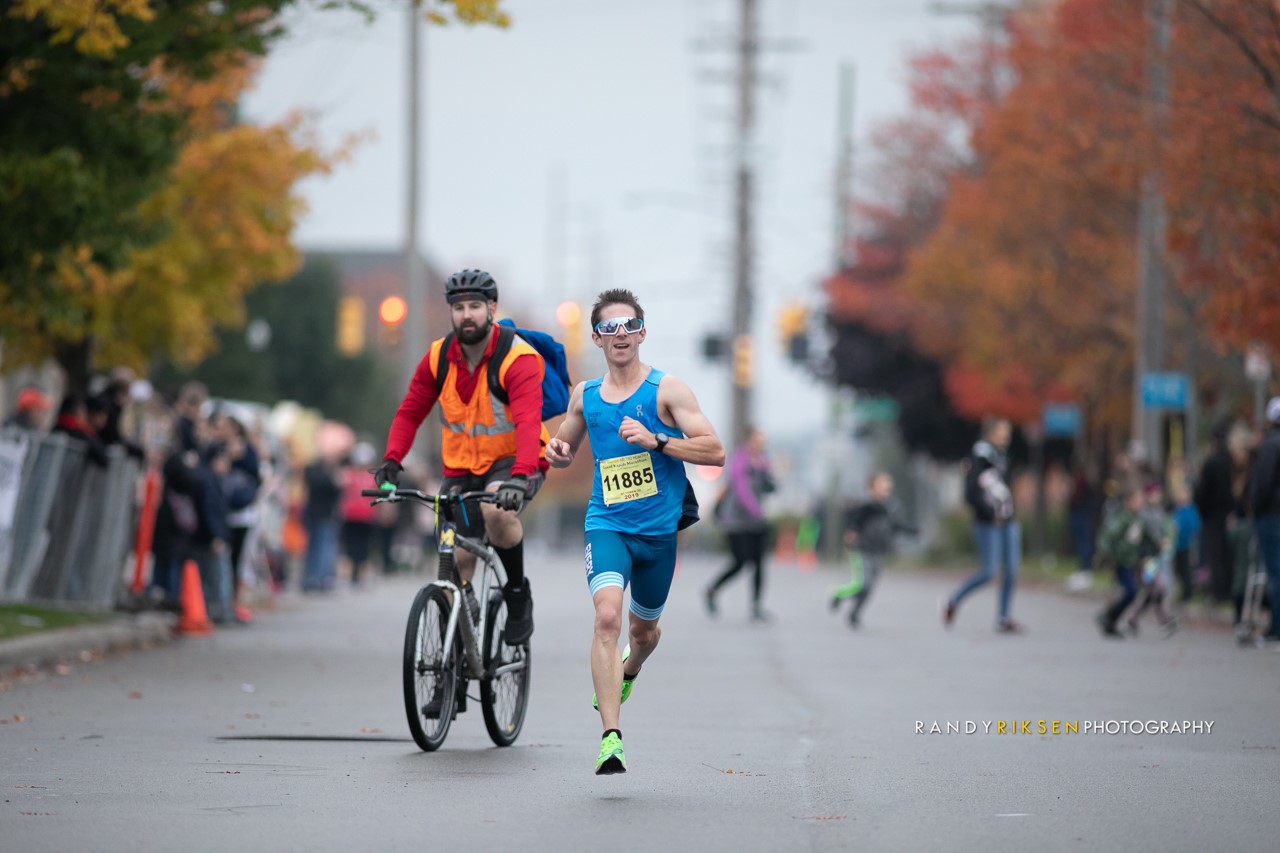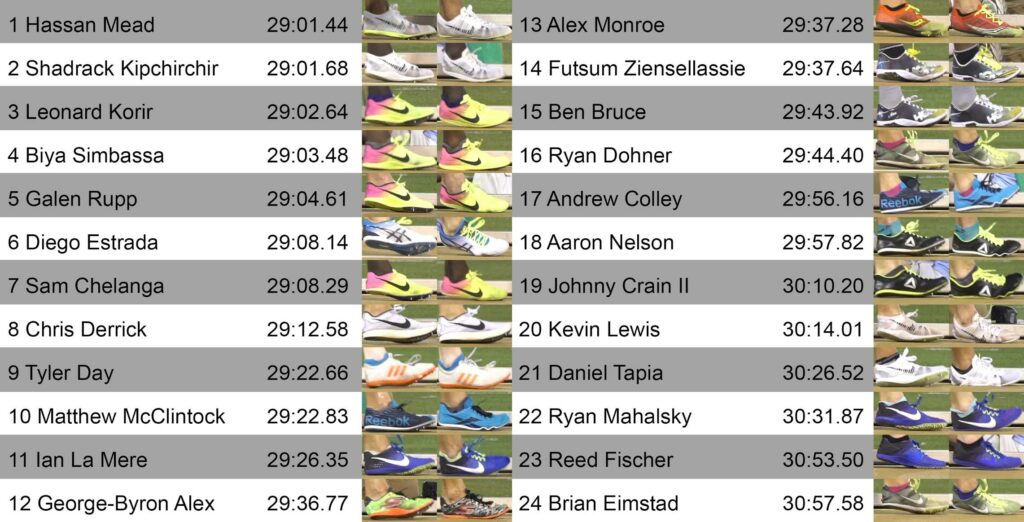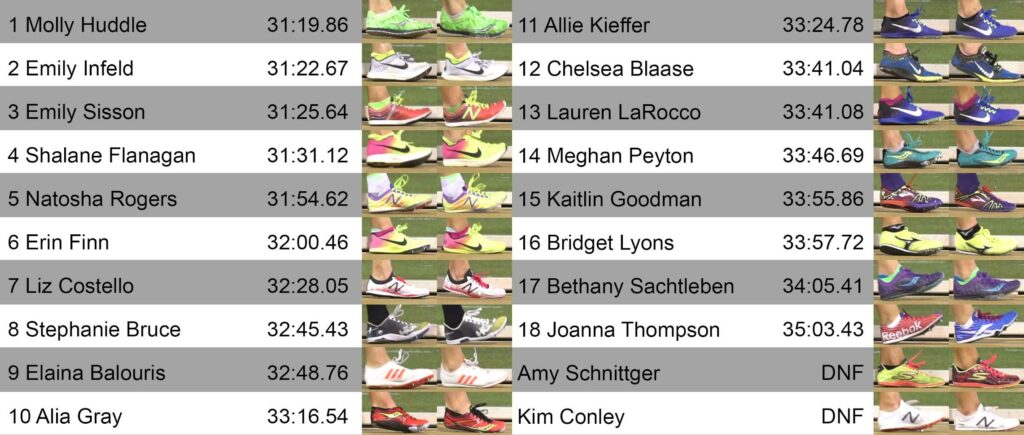
14 Apr How to Measure Your Running Cadence
Todd Buckingham, Ph.D. | Lead Exercise Physiologist, Mary Free Bed Sports Rehabilitation
Running Cadence
For years, runners around the world have heard that running at 180 steps per minute (spm) is the ideal running cadence. This came from the legendary run coach, Jack Daniels (no, not that Jack Daniels…cue drinking jokes) and his observation of elite distance runners in the 1984 Olympics. He looked at 45 elite runners who took at least 180 spm…not exactly 180 spm. Furthermore, this was in a RACE where everyone was running extremely fast (remember, these are Olympians we’re talking about).
When you’re running in a race (or even a fast workout), you will likely have a high cadence because you’re running faster. Daniels told us nothing about the runners’ cadence when they were running slower. When you’re running at different speeds, you should NOT be running with the same cadence.
Time for a quick math lesson:
Running velocity (speed) = stride length (m) x stride cadence (spm)
So, let’s say your half-marathon race pace is 8:30/mile (7.0 mph). If you want your cadence to be 180 spm, your stride length would have to be 1.12 meters, or about 3.7 feet. Now that’s your race pace. For your easy runs (which should be 90 seconds to 2 minutes slower than your half-marathon race pace…aka threshold pace) you will be running 10:00/mile (6 mph) – 11:30/mile (5.2 mph). Keeping your cadence at 180 spm for both paces, your stride length would be between 0.77 and 0.89 meters, or 2.5 – 3 feet. An entire foot shorter than your race pace stride length! Next time you’re running, try this out and you will feel like you’re just jumping up and down in place trying to maintain a cadence of 180 spm running at a slower speed. Just check out the video of me running at 6:00/mile (10 mph) and 10:00/mile (6 mph). You can see that the cadence is extremely uncomfortable for me at the slower pace.
Therefore, to increase your velocity, you must increase either your stride length, cadence, or both. If you’re running slow, your stride length and/or cadence will be low. And if you’re running fast, your stride length and/or cadence will have to be higher. The “magical” number of 180 spm doesn’t take speed into account because all the runners Daniels observed were running fast! (Again, they were Olympians in a race).
Decades of actual research (Daniels simply observed runners with a stopwatch and notepad…it wasn’t an actual scientific study) has shown that your body naturally selects the most efficient stride cadence. Altering that cadence for a given running speed can actually cause the runner to use more energy by taking shorter (or longer) strides to hit that 180 spm goal. If you’re a nerd like me and want to read the study, you can click the link here.
You can actually manipulate your stride length/cadence relationship pretty easily. Just look at this quick video of me running at 10 mph on the treadmill.
My normal cadence looks to be right around 180 spm. Therefore, my stride length must be 1.5 meters. Then, I changed up my stride to take longer, slower strides where my cadence shifted to 160 spm and my stride length to ~1.7 meters. Then, I took really short, fast steps, shifting my cadence to 200 spm and stride length to ~1.3 meters. The speed on the treadmill never changed, but my cadence varied by 40 spm.
Taking longer or shorter strides is not a bad thing. It’s largely dependent on how fast you’re running. A caveat to this is if you’re landing with your foot in front of your body. It doesn’t matter if you heel strike or land on your toes or the balls of your feet. But if your foot is landing too far out in front of your center of gravity, you should change your gait to prevent or minimize the over striding. Just take a look at these images from professional runners. 11 of the 20 women and 14 of the 24 men were heel strikers. What I can guarantee you they are not doing is landing with their foot too far in front of their body. Your stride should actually come from behind you, not in front of you. Instead of reaching in front of your body with your foot, push off more forcefully with your foot behind your body.


So far, we’ve just talked about the performance aspect of cadence. But what about injuries? Some say that having a higher cadence will reduce injury risk, but this is still debated. You can look at this article on Runner’s World to see for yourself https://www.runnersworld.com/health-injuries/a20811082/does-running-cadence-predict-injury/. Essentially, one study found no difference between healthy and injured runners and their cadence. Furthermore, this study observed that those with a higher cadence did not have the lowest load rate (i.e., how hard the foot hits the ground). The other study found that 13 of 19 runners with a cadence of 168 spm or lower got injured while only 2 of 9 with a cadence greater than 169 spm got injured. So, one study found no difference between cadence and injury and the other found 68% of runners with a low cadence got injured and only 22% of runners with a higher cadence got injured. Obviously, this study was very small and further research is needed. But it just goes to show that findings are mixed when it comes to cadence and injury risk.
Moral of the story: don’t think too much about your cadence. Your body will naturally select what is “right” for you at a given speed. The caveats to this are if you find yourself injured often or if you overstride (i.e., land with your foot too far out in front of your body).